Volume 6 | Number 1 | May 2014
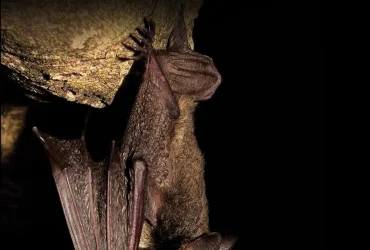 v6i1.120
v6i1.120ISSN: 1800-427X (print)
eISSN: 1800-427X (online)
DOI:10.47605/tapro.v6i1.120
Submitted date: 10 September 2012
Accepted date: 25 February 2013
Published date: 29 June 2014
Pp. 1–6, Pl. 1.
POPULATION DENSITY AND BIOMASS OF THE WILD PREY SPECIES IN A TROPICAL DECIDUOUS FOREST, CENTRAL INDIA
Kannadasan Narasimmarajan*, Subhasis Mahato & Abinash Parida
*Corresponding author. E-mail: wildlife9protect@gmail.com
Abstract
For proper management of a wildlife reserve, it is essential to estimate density and biomass of herbivores that in turn determine the density of carnivores. We estimated the population density and biomass of three ungulates and two other species in the Melghat Tiger Reserve, Central India. The study was conducted from September 2010 to April 2011. We used distance sampling to estimate the population density of wild prey species. The 225km2 intensive study area was found to have high prey species density (69.5±8.3 individuals/km2), with gray langur being the abundant prey species (42.9±7.2 individuals/km2), followed by sambar (10.5±3.5 individuals/km2), gaur (5.8±1.7 individuals/km2), barking deer (2.7±0.3 individuals/km2), and peafowl (7.6±0.6 individuals/km2). When the density figures were multiplied by the average weight of each prey species, biomass of 6501.8 kg/km2 was obtained.
Key words : Abundance; Anthropogenic; Carnivore; Gugamal National Park; Melghat Tiger Reserve
Section Editor: Lee E. Harding
eISSN: 1800-427X (online)
DOI:10.47605/tapro.v6i1.120
Submitted date: 10 September 2012
Accepted date: 25 February 2013
Published date: 29 June 2014
Pp. 1–6, Pl. 1.
POPULATION DENSITY AND BIOMASS OF THE WILD PREY SPECIES IN A TROPICAL DECIDUOUS FOREST, CENTRAL INDIA
Kannadasan Narasimmarajan*, Subhasis Mahato & Abinash Parida
*Corresponding author. E-mail: wildlife9protect@gmail.com
Abstract
For proper management of a wildlife reserve, it is essential to estimate density and biomass of herbivores that in turn determine the density of carnivores. We estimated the population density and biomass of three ungulates and two other species in the Melghat Tiger Reserve, Central India. The study was conducted from September 2010 to April 2011. We used distance sampling to estimate the population density of wild prey species. The 225km2 intensive study area was found to have high prey species density (69.5±8.3 individuals/km2), with gray langur being the abundant prey species (42.9±7.2 individuals/km2), followed by sambar (10.5±3.5 individuals/km2), gaur (5.8±1.7 individuals/km2), barking deer (2.7±0.3 individuals/km2), and peafowl (7.6±0.6 individuals/km2). When the density figures were multiplied by the average weight of each prey species, biomass of 6501.8 kg/km2 was obtained.
Key words : Abundance; Anthropogenic; Carnivore; Gugamal National Park; Melghat Tiger Reserve
Section Editor: Lee E. Harding
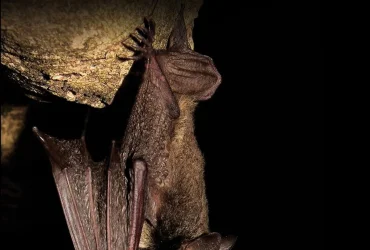 v6i1.136
v6i1.136ISSN: 1800-427X (print)
eISSN: 1800-427X (online)
DOI:10.47605/tapro.v6i1.136
Submitted date: 18 November 2013
Accepted date: 1 May 2014
Published date: 29 June 2014
Pp. 68–71, Pl. 16.
A breeding colony of the brown bat (Myotis hasseltii) from Sri Lanka
S.M. Wellappulli-Arachchi, W.G.M. Edirisinghe*, D.S.B. Dissanayake, Y. Mapatuna & S. Wickramasinghe
*Corresponding author. E-mail: gayan.yza@gmail.com
Myotis hasseltii (Temminck, 1840) variously known as the brown bat, Van Hasselt’s bat, Van Hasselt’s mouse-eared bat, or lesser large-footed myotis in the vernacular is a patchily distributed species; aside from Sri Lanka, within the Indian Subcontinent it is found only in West Bengal. The brown bat is thought to be uncommon and is a resident of land below the 1000m contour. It has been reported to roost alone or in small groups in bamboo clumps, cracks in tree bark, and in abandoned buildings. Mangrove swamps are another possible habitat for these bats. M. hasseltii likes living near water and flies low over streams, tanks (reservoirs), and mangrove swamps hunting for gnats, small flies, and mosquitoes. Extralimitally, an individual of this species was found with fish remains in its stomach.
Section Editor: Asoka Yapa
eISSN: 1800-427X (online)
DOI:10.47605/tapro.v6i1.136
Submitted date: 18 November 2013
Accepted date: 1 May 2014
Published date: 29 June 2014
Pp. 68–71, Pl. 16.
A breeding colony of the brown bat (Myotis hasseltii) from Sri Lanka
S.M. Wellappulli-Arachchi, W.G.M. Edirisinghe*, D.S.B. Dissanayake, Y. Mapatuna & S. Wickramasinghe
*Corresponding author. E-mail: gayan.yza@gmail.com
Myotis hasseltii (Temminck, 1840) variously known as the brown bat, Van Hasselt’s bat, Van Hasselt’s mouse-eared bat, or lesser large-footed myotis in the vernacular is a patchily distributed species; aside from Sri Lanka, within the Indian Subcontinent it is found only in West Bengal. The brown bat is thought to be uncommon and is a resident of land below the 1000m contour. It has been reported to roost alone or in small groups in bamboo clumps, cracks in tree bark, and in abandoned buildings. Mangrove swamps are another possible habitat for these bats. M. hasseltii likes living near water and flies low over streams, tanks (reservoirs), and mangrove swamps hunting for gnats, small flies, and mosquitoes. Extralimitally, an individual of this species was found with fish remains in its stomach.
Section Editor: Asoka Yapa
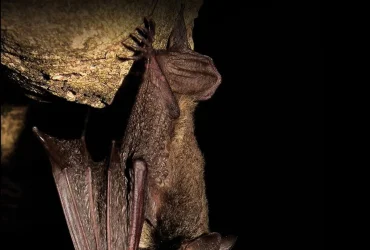 v6i1.135
v6i1.135ISSN: 1800-427X (print)
eISSN: 1800-427X (online)
DOI:10.47605/tapro.v6i1.135
Submitted date: 30 September 2013
Accepted date: 23 April 2014
Published date: 29 June 2014
Pp. 66–67.
On the nectar feeding by the fulvous fruit bat (Rousettus leschenaulti)
W.G.M. Edirisinghe* & T.G.T. Kusuminda
*Corresponding author. E-mail: gayan.yza@gmail.com
Phytophagous or fruit bats feed primarily on fruits, seeds, and flower buds. Some fruit bats also feed on flower nectar, a habit that affects pollination and plant dispersal. As a consequence of chiropteran nectarivory many commercially important plant species are known to be pollinated. Nectar is an important source of carbohydrates and water for bats. Plant characteristics that influence pollination include time of anthesis; mode of nectar secretion; the colour, odour, morphology, position of flowers; the amount and protein content of pollen; the volume of nectar; and, the concentration of sugar.
Section Editor: Asoka Yapa
eISSN: 1800-427X (online)
DOI:10.47605/tapro.v6i1.135
Submitted date: 30 September 2013
Accepted date: 23 April 2014
Published date: 29 June 2014
Pp. 66–67.
On the nectar feeding by the fulvous fruit bat (Rousettus leschenaulti)
W.G.M. Edirisinghe* & T.G.T. Kusuminda
*Corresponding author. E-mail: gayan.yza@gmail.com
Phytophagous or fruit bats feed primarily on fruits, seeds, and flower buds. Some fruit bats also feed on flower nectar, a habit that affects pollination and plant dispersal. As a consequence of chiropteran nectarivory many commercially important plant species are known to be pollinated. Nectar is an important source of carbohydrates and water for bats. Plant characteristics that influence pollination include time of anthesis; mode of nectar secretion; the colour, odour, morphology, position of flowers; the amount and protein content of pollen; the volume of nectar; and, the concentration of sugar.
Section Editor: Asoka Yapa
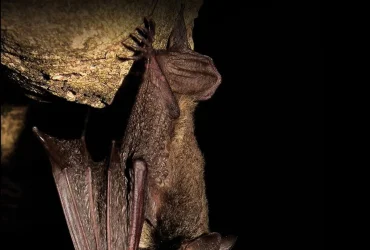 v6i1.134
v6i1.134ISSN: 1800-427X (print)
eISSN: 1800-427X (online)
DOI:10.47605/tapro.v6i1.134
Submitted date: 4 January 2014
Accepted date: 25 April 2014
Published date: 29 June 2014
Pp. 63–65.
The highest elevation record of the brown long-eared bat (Plecotus auritus)
S. Thapa*, K.B. Shah & M. Chetri
*Corresponding author. E-mail: sanjan@smcrf.org
B.H. Hodgson collected the holotype in 1847, named it Plecotus homochrous, and labelled the animal as a male taken in the ‘central region of sub-Himalayas’ which does not necessarily mean Nepal and, in fact, may have been Darjeeling in India or Sikkim. Fleming collected a specimen (Sanborn 1950), most certainly from Nepal, which Sanborn labelled Plecotus homochrous. This specimen is retained in the collections of the Field Museum of Natural History (FMNH), Chicago, USA where its identity is listed currently as P. auritus homochrous (Pearch, 2011). Due to ambiguity of Hodgson's record we are treating Fleming's specimen as the first from Nepal. Bates & Harrison (1997) refers to the species as P. auritus. The genus Plecotus includes a number of cryptic forms and further investigation may well prove that even Plecotus auritus is comprised of more than one taxon .
Section Editor: Asoka Yapa
eISSN: 1800-427X (online)
DOI:10.47605/tapro.v6i1.134
Submitted date: 4 January 2014
Accepted date: 25 April 2014
Published date: 29 June 2014
Pp. 63–65.
The highest elevation record of the brown long-eared bat (Plecotus auritus)
S. Thapa*, K.B. Shah & M. Chetri
*Corresponding author. E-mail: sanjan@smcrf.org
B.H. Hodgson collected the holotype in 1847, named it Plecotus homochrous, and labelled the animal as a male taken in the ‘central region of sub-Himalayas’ which does not necessarily mean Nepal and, in fact, may have been Darjeeling in India or Sikkim. Fleming collected a specimen (Sanborn 1950), most certainly from Nepal, which Sanborn labelled Plecotus homochrous. This specimen is retained in the collections of the Field Museum of Natural History (FMNH), Chicago, USA where its identity is listed currently as P. auritus homochrous (Pearch, 2011). Due to ambiguity of Hodgson's record we are treating Fleming's specimen as the first from Nepal. Bates & Harrison (1997) refers to the species as P. auritus. The genus Plecotus includes a number of cryptic forms and further investigation may well prove that even Plecotus auritus is comprised of more than one taxon .
Section Editor: Asoka Yapa
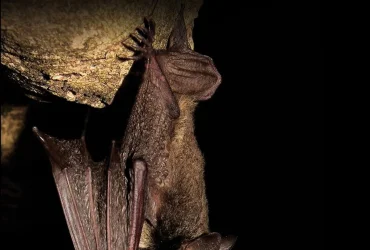 v6i1.133
v6i1.133ISSN: 1800-427X (print)
eISSN: 1800-427X (online)
DOI:10.47605/tapro.v6i1.133
Submitted date: 22 November 2012
Accepted date: 17 January 2014
Published date: 29 June 2014
Pp. 60–62, Pls. 12–15.
Morning territorial calls of male oriental magpie robin (Copsychus saularis)
Vijay Kumar Koli*
*Corresponding author. E-mail: vijaykoli87@yahoo.in
Oriental magpie robin, Copsychus saularis (Linnaeus, 1758) a resident breeder in tropical Southern Asia including India, Bangladesh, Pakistan, Sri Lanka, east Indonesia, south China and Phillippines, prefers cultivated areas, woodlands and areas close to human settlement. It is mainly insectivore and its activities are influenced by surrounding environment. Rajasthan is the largest state of India and distribution of this species is restricted to south-eastern part of the state. The study was conducted in Sitamata Wildlife Sanctuary (24°04´-24°23´N, 74°25´-74°40´E), located in southern Rajasthan, India, and covers an area about 423 km2.
Section Editor: Varadharajan Gokula
eISSN: 1800-427X (online)
DOI:10.47605/tapro.v6i1.133
Submitted date: 22 November 2012
Accepted date: 17 January 2014
Published date: 29 June 2014
Pp. 60–62, Pls. 12–15.
Morning territorial calls of male oriental magpie robin (Copsychus saularis)
Vijay Kumar Koli*
*Corresponding author. E-mail: vijaykoli87@yahoo.in
Oriental magpie robin, Copsychus saularis (Linnaeus, 1758) a resident breeder in tropical Southern Asia including India, Bangladesh, Pakistan, Sri Lanka, east Indonesia, south China and Phillippines, prefers cultivated areas, woodlands and areas close to human settlement. It is mainly insectivore and its activities are influenced by surrounding environment. Rajasthan is the largest state of India and distribution of this species is restricted to south-eastern part of the state. The study was conducted in Sitamata Wildlife Sanctuary (24°04´-24°23´N, 74°25´-74°40´E), located in southern Rajasthan, India, and covers an area about 423 km2.
Section Editor: Varadharajan Gokula
Hubungi Kami
The ultimate aim of the journal is to provide an effective medium for communication of the latest and best scientific information.
Copyright © 2020 Taprobanica. All Rights Reserved
Jasa Pembuatan Website by IKT




